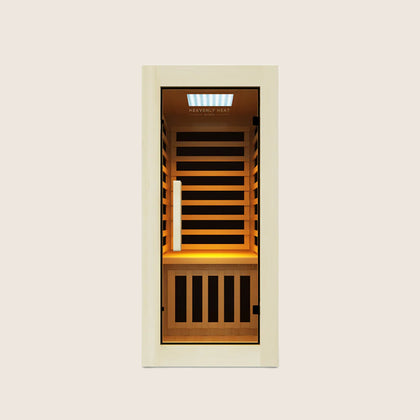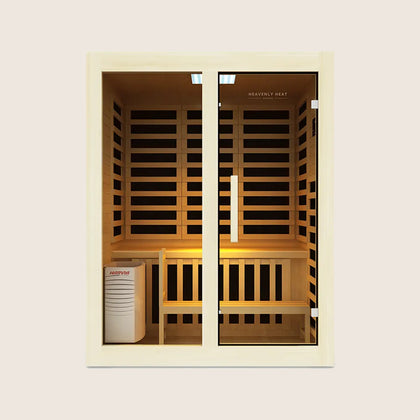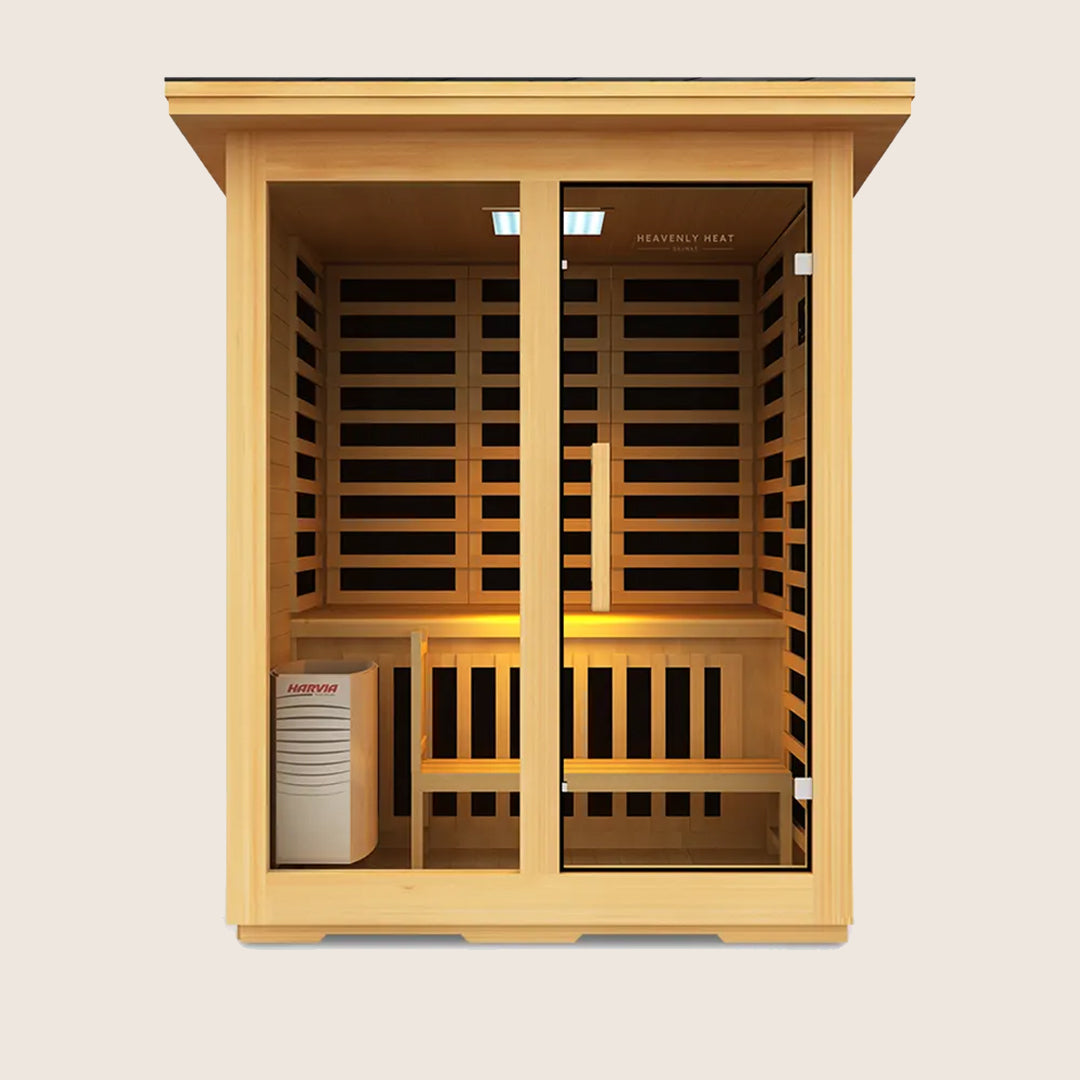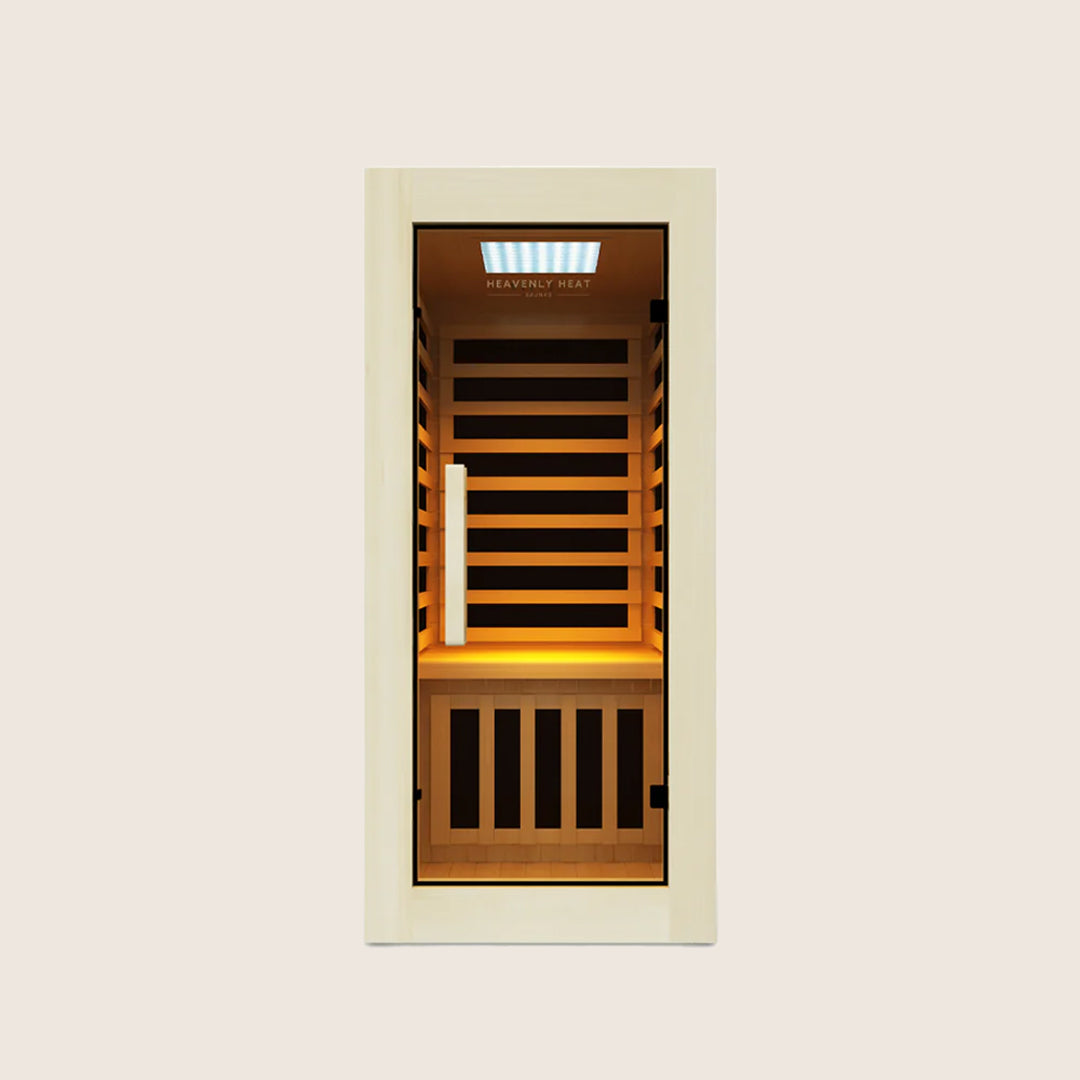heavenly heat saunas
Infrared Sauna vs Traditional: An Overview

In today’s fast-paced world, people are constantly searching for ways to improve their health and well-being. One popular method that has gained a lot of attention is the use of saunas. Saunas have been around for centuries and are known for their potential health benefits. However, with advancements in technology, the traditional sauna has been challenged by a new contender – the infrared sauna. In this article, we will delve into the debate about which is better infrared or traditional sauna.
Infrared Sauna vs Traditional: Overview
- Traditional saunas heat the whole room to make you sweat: A traditional sauna works by heating rocks that warm the air. Pouring water on the rocks adds steam, making the room hotter and more humid,” says Tom Ingegno , a licensed Baltimore Acupuncturist and Certified Animal Acupuncturist
- Infrared saunas warm your body without heating the room: Instead of heating the air, infrared saunas send heat straight into your body. This means you sweat more at a lower and more comfortable temperature.
- The hot steam in traditional saunas helps you relax deeply: Pouring water on hot rocks in a traditional sauna creates bursts of steam. This age-old practice helps your muscles relax and eases your stress.
- Infrared saunas go deeper into your skin for better detox: The heat from infrared saunas goes deep under your skin. This helps clean out toxins, improve blood flow, ease pain, and make your skin look better.
- Both types help your health, but one may suit you better: Both saunas offer benefits like sweating out toxins and improving circulation. But if high heat feels too much, infrared might be the more comfortable choice for you.
what is the difference between infrared and traditional saunas
- Traditional saunas heat the air, while infrared saunas heat your body: The biggest difference is how the heat works. Traditional saunas warm the whole room by heating rocks, while infrared saunas use heaters that send warmth straight into your body without making the room super hot.
- Infrared saunas are easier to breathe in than traditional ones: Because traditional saunas use hot air and steam, some people find it hard to breathe, especially if they have breathing problems. Infrared saunas don’t create thick air, so it feels easier and more comfortable to breathe.
- You don’t have to wait long for an infrared sauna to get hot: Traditional saunas take time to warm up because the rocks need to get hot first. Infrared saunas heat up much faster, which is helpful if you’re short on time or want a quick session.
- Both saunas make you sweat, but they do it differently: Traditional saunas make you sweat with high temperatures and steam, which helps clean out your body and boost blood flow. Infrared saunas also make you sweat, but they use deep heat at lower temperatures to get a stronger sweat from under your skin .
- Infrared saunas go deeper and help with pain and skin: Because infrared heat goes deeper into your body, it can help relax your muscles, reduce pain, and even improve your skin. This makes infrared saunas a good choice if you're looking for more than just relaxation.
Infrared Sauna vs Traditional: Pros & Cons
Now that we’ve explored the key differences between infrared saunas and traditional saunas, let’s weigh the pros and cons of each option.
Traditional Sauna: Pros
- Creates a traditional sauna experience with steam and heat
- Can help with relaxation and stress relief
- May improve circulation and promote detoxification
Traditional Sauna: Cons
- High temperatures may be uncomfortable for some individuals
- Dry air can cause breathing difficulties for those with respiratory conditions
- Requires longer heating time
Infrared Sauna: Pros
- Provides a more comfortable and bearable heat
- Heats up faster, saving time
- May penetrate deeper into the body for enhanced detoxification
Infrared Sauna: Cons
- Does not provide the traditional sauna experience with steam
- Lower temperatures may not be as effective for some individuals
- May require more sessions for desired results
Infrared Sauna vs Traditional: Which is Better?
- You’ll love a traditional sauna if you enjoy heavy steam and intense heat: Traditional saunas are great for people who like sitting in hot, steamy rooms that make them sweat a lot. The heat and steam help relax your body and open your pores for a strong detox effect.
- Infrared saunas are better if you want milder heat and quick comfort: Infrared saunas heat your body directly without making the air around you too hot. This makes the experience gentler and more comfortable, especially for people who feel dizzy or drained in high heat.
- Both types of saunas can help you relax and feel healthier: No matter which type you choose, both saunas can improve blood flow, help you relax, and even support weight loss . They’re both good for your health if you use them regularly.
- The right sauna for you depends on your body and lifestyle: Your final choice should match what feels good for your body, how much heat you can handle, your budget, and what’s available to you. There’s no one-size-fits-all answer, go with what suits you best.
| Best For | Sauna Type | Why? |
| Deep Detoxification | Infrared Sauna | Penetrates deeper into the skin for cellular-level detox |
| Traditional Experience | Traditional Sauna | Includes steam, high heat, and the classic sauna ritual |
| Quick & Convenient Use | Infrared Sauna | Heats up quickly and is more comfortable for daily use |
| High Heat Lovers | Traditional Sauna | Reaches up to 200°F, providing an intense sweat session |
| Budget-Conscious Buyers | Infrared Sauna | More affordable options available, including portable saunas |
Is a traditional sauna more expensive than an infrared sauna?
- Paying more upfront is common with traditional saunas: Traditional saunas often cost more in the beginning because they need special construction, steam generators, and proper ventilation, all of which add to the total setup cost.
- Infrared saunas are easier on your wallet: Infrared saunas usually cost less and are available in many budget-friendly options. Portable models are especially good for people who don’t want to spend much or have less space at home.
Can you convert an infrared sauna to a traditional sauna?
- Converting your infrared sauna to traditional is possible but takes effort: If you already have an infrared sauna and are curious about switching to a traditional one, you should know it's definitely possible, but it's not something that can be done easily or casually.
- Changing the heating system is not just a small upgrade: To make the switch, you’ll need to remove the existing infrared heaters and replace them with a traditional sauna heater. This means reworking the whole heating setup, not just adding a new part.
- Proper ventilation and insulation must be added or adjusted: Traditional saunas produce more heat and steam, so your current sauna room will likely need upgrades to its insulation and ventilation. Without this, the sauna might not work properly or safely.
- Doing it yourself can be risky and may cost more in the long run: Because of the electrical work and heat management involved, trying to convert it on your own can be dangerous or lead to bigger repair bills later.
- Hiring a sauna expert will save you time, stress, and mistakes: The best move is to talk to a professional sauna installer. They’ll tell you if the conversion makes sense for your setup and give you an idea of what it will cost and require.























